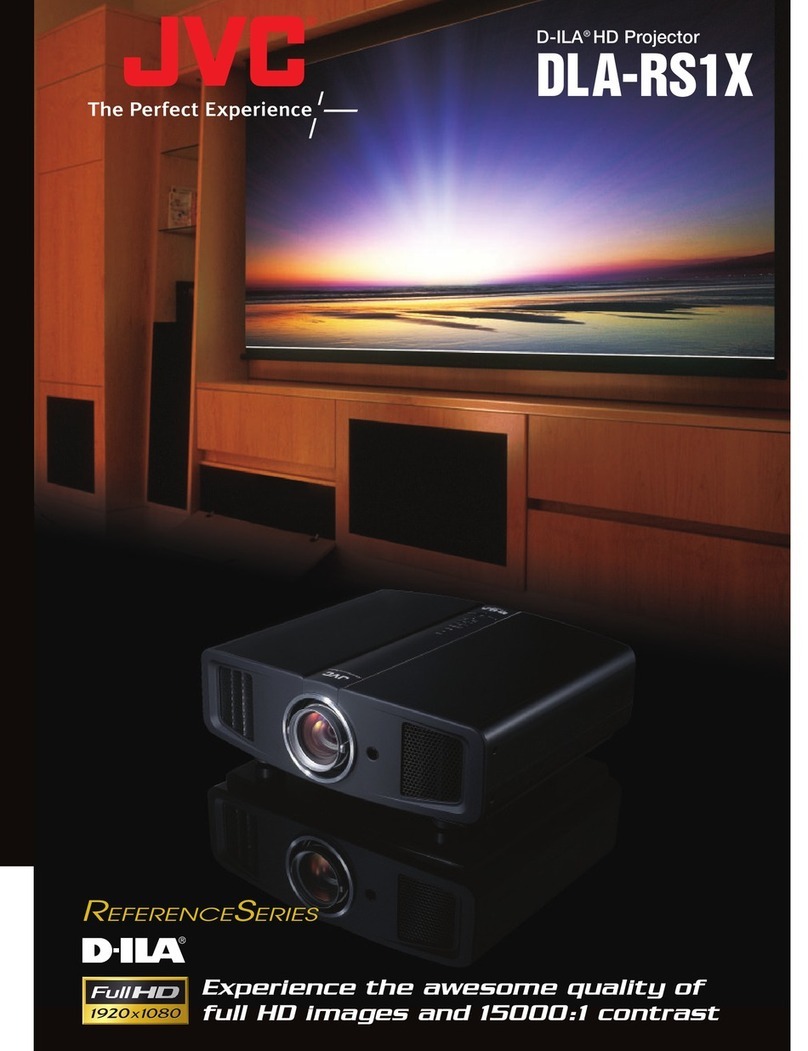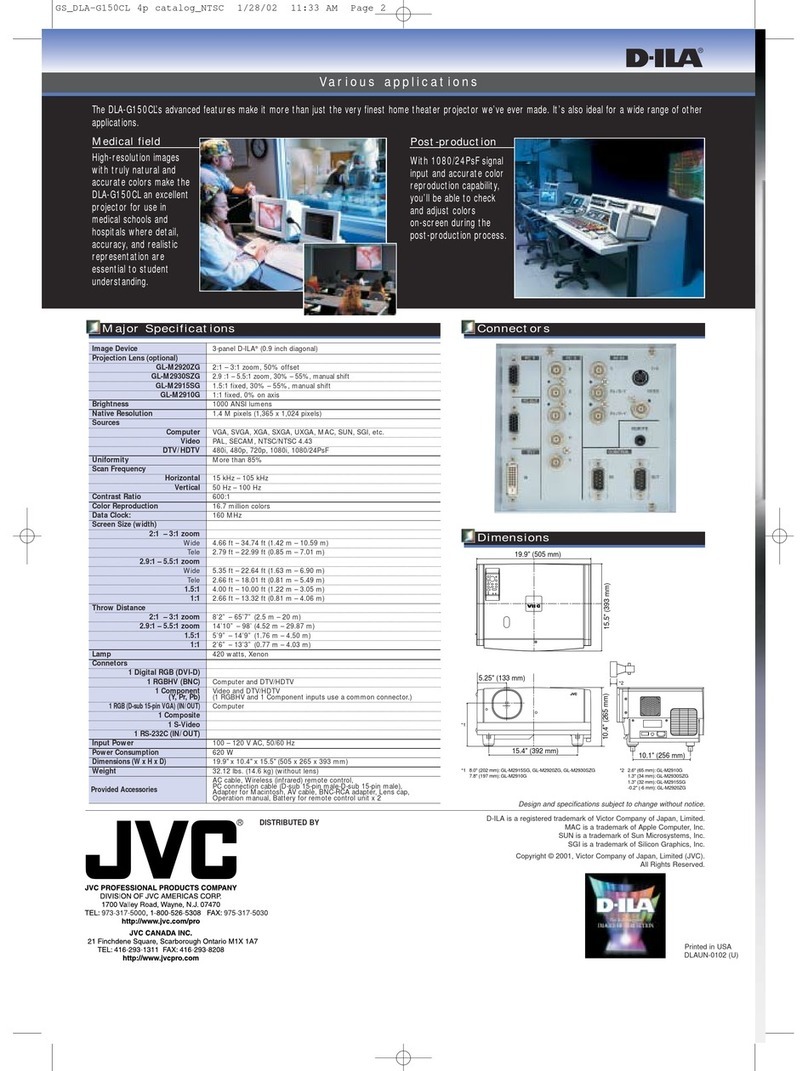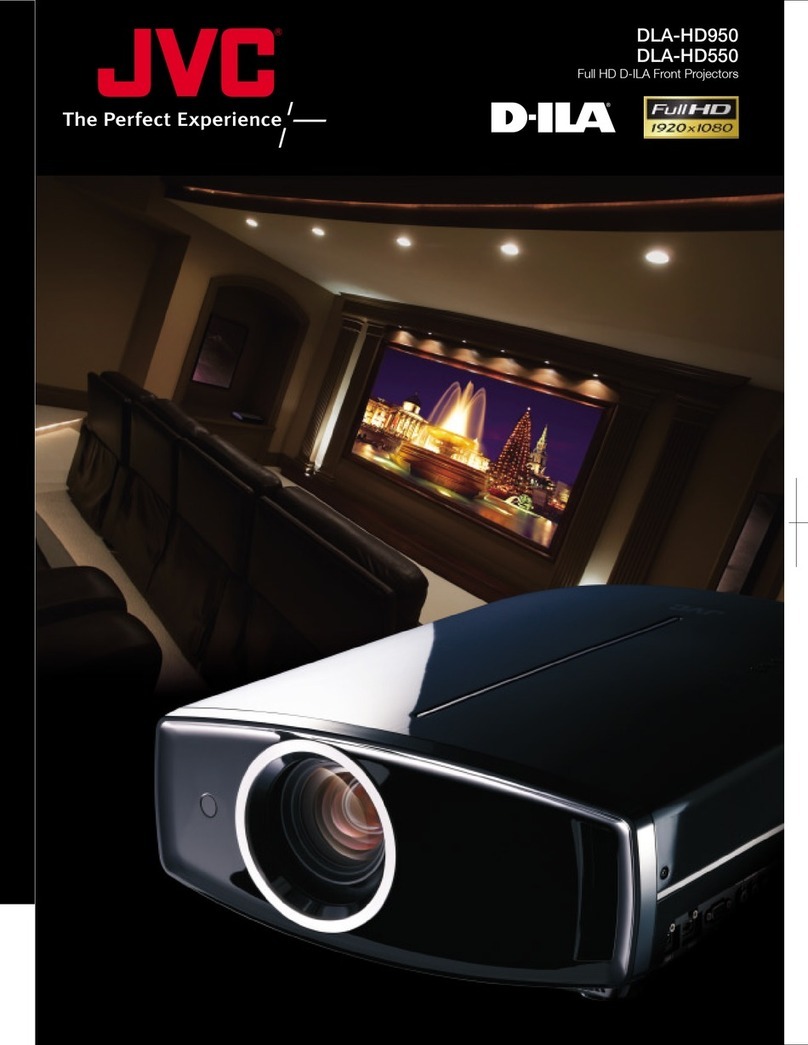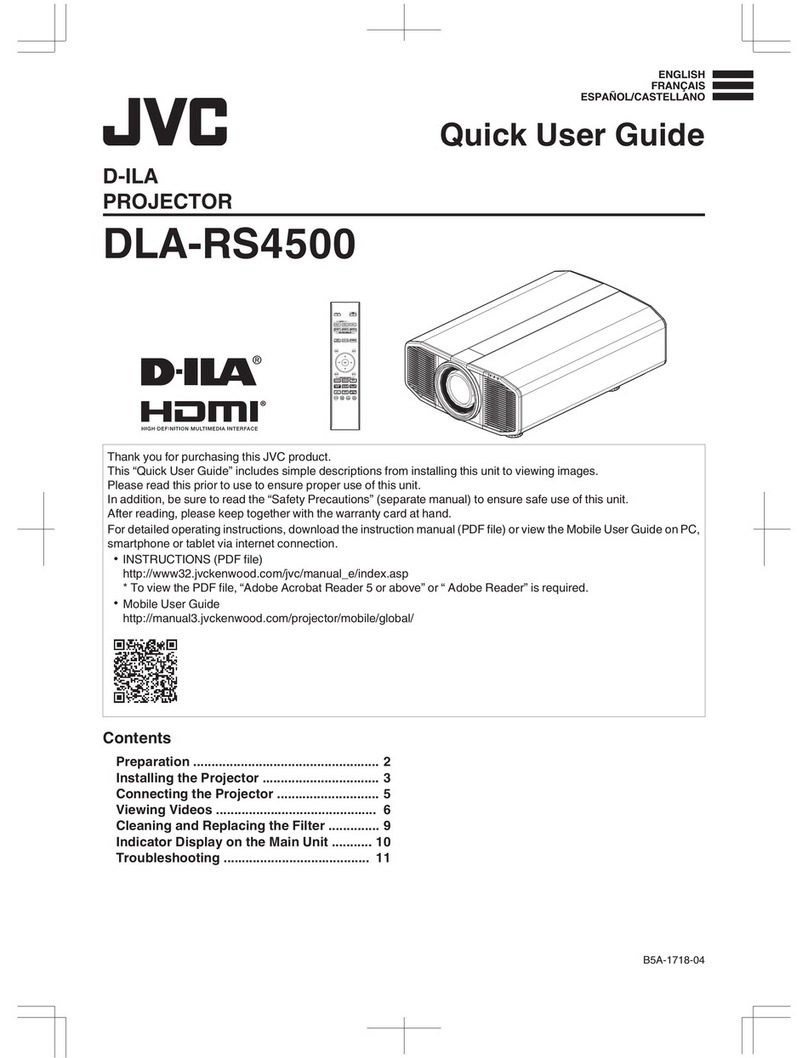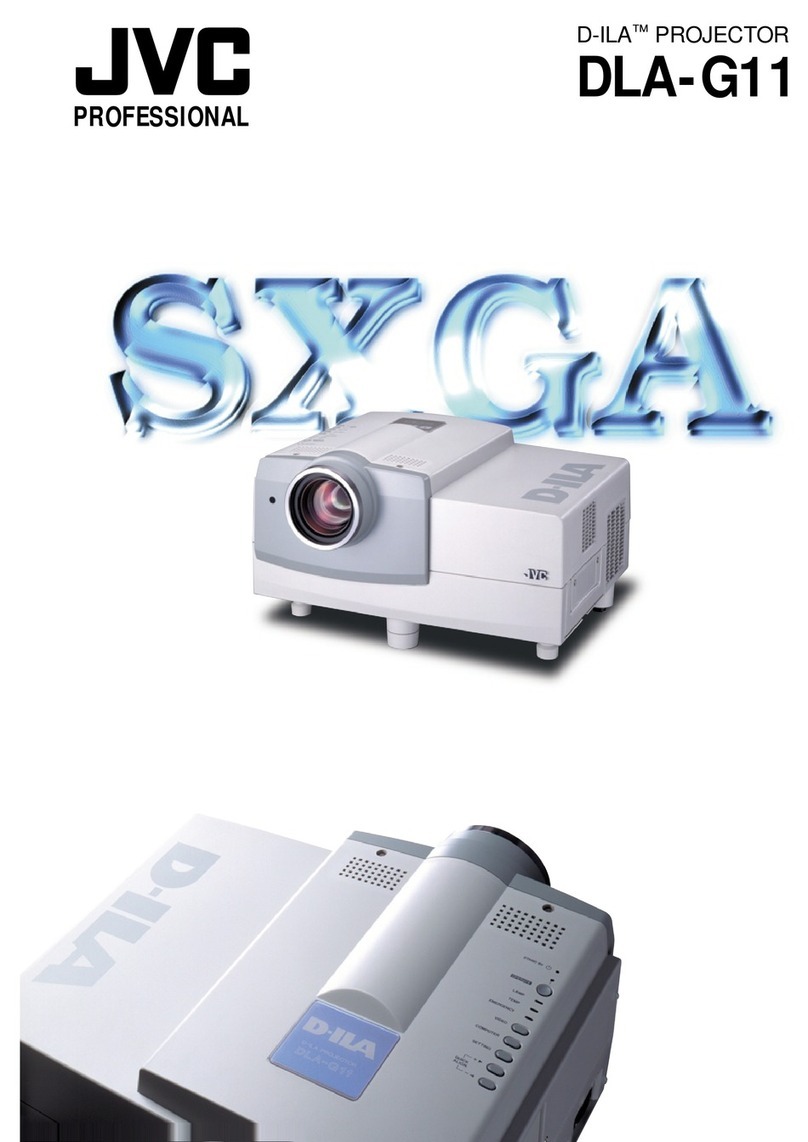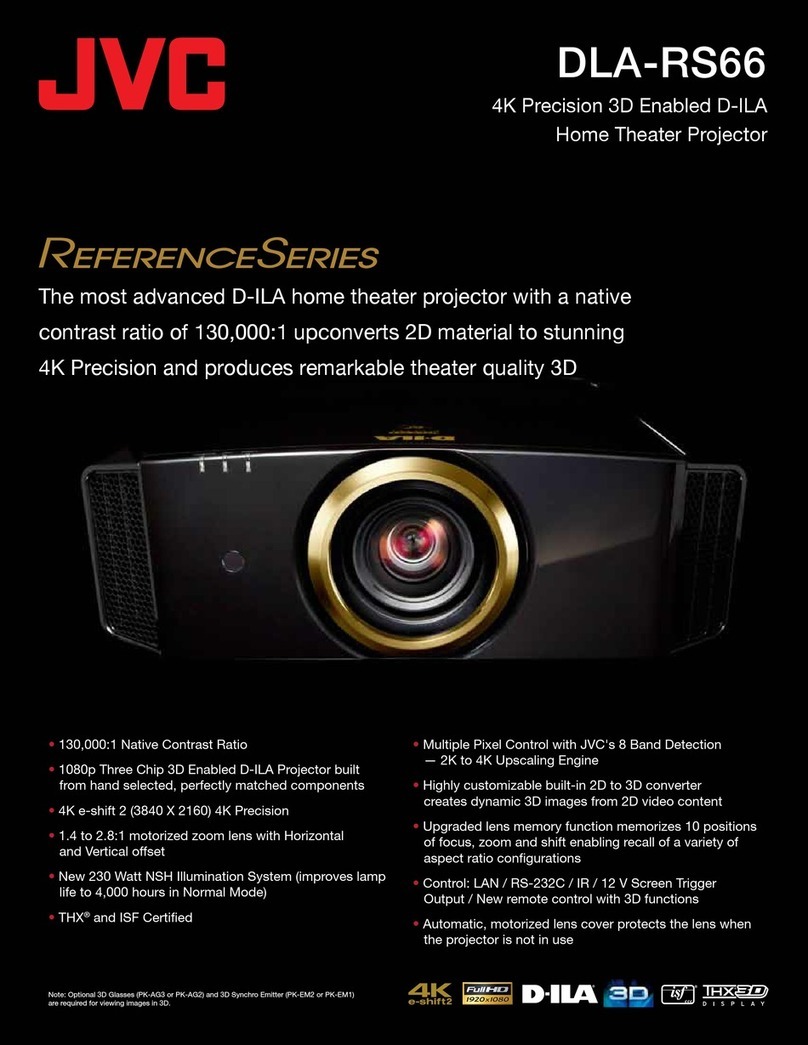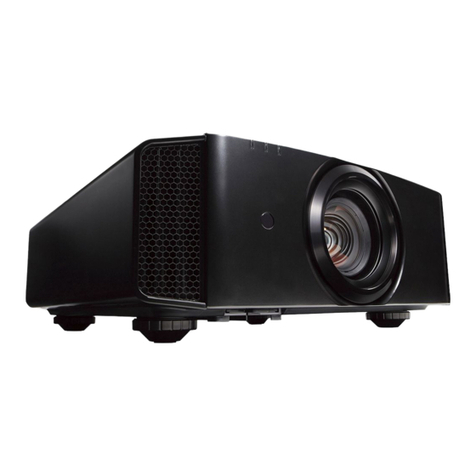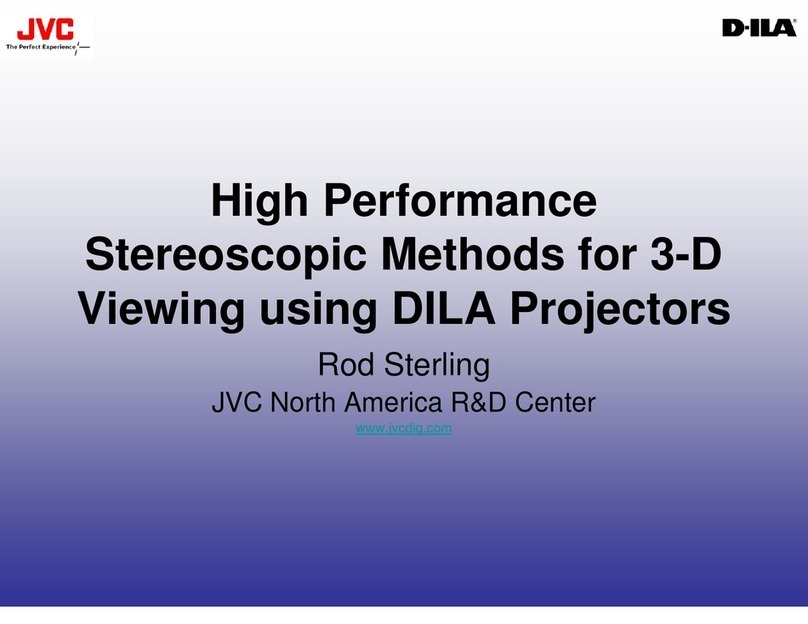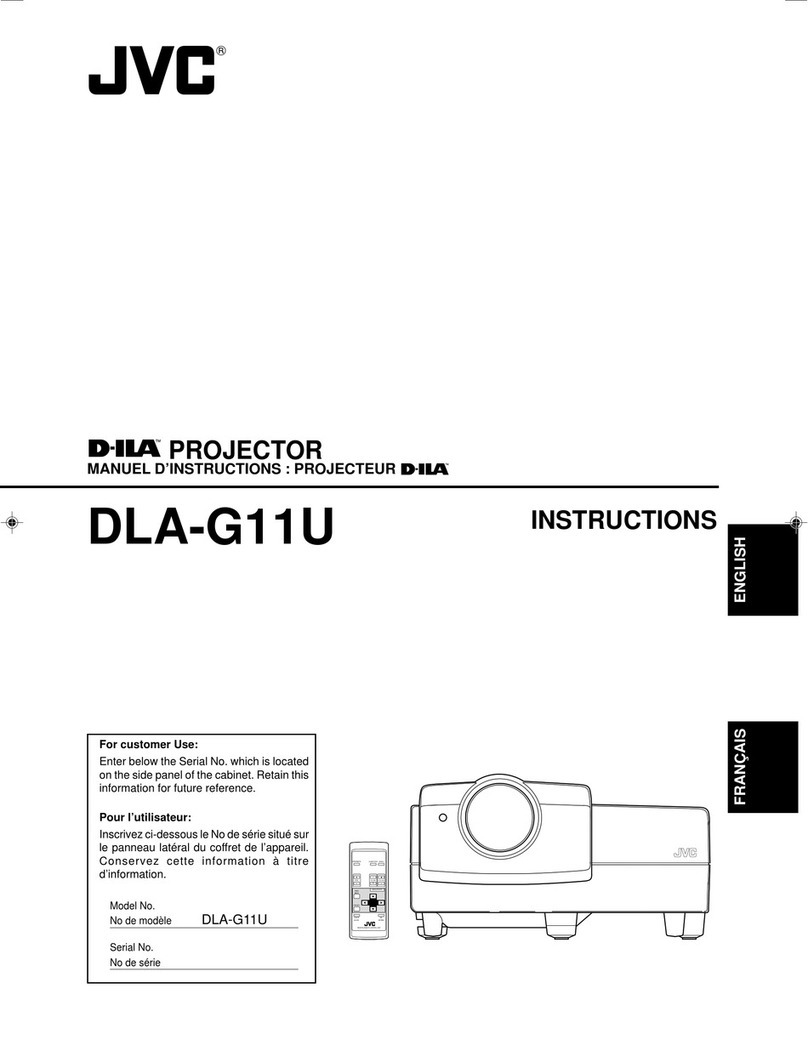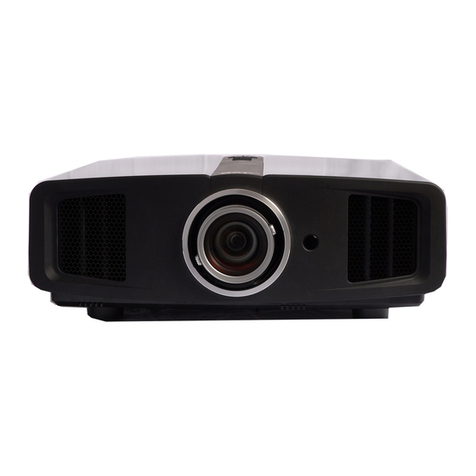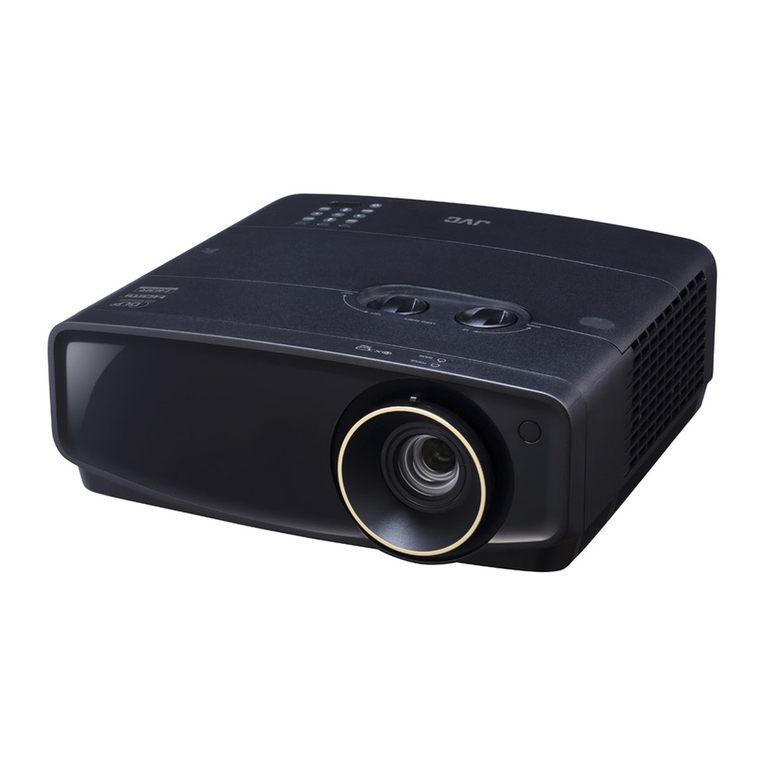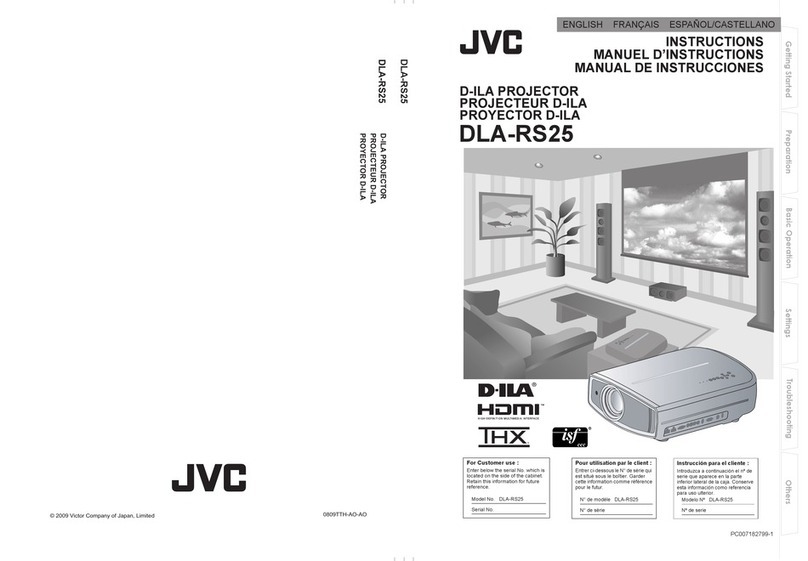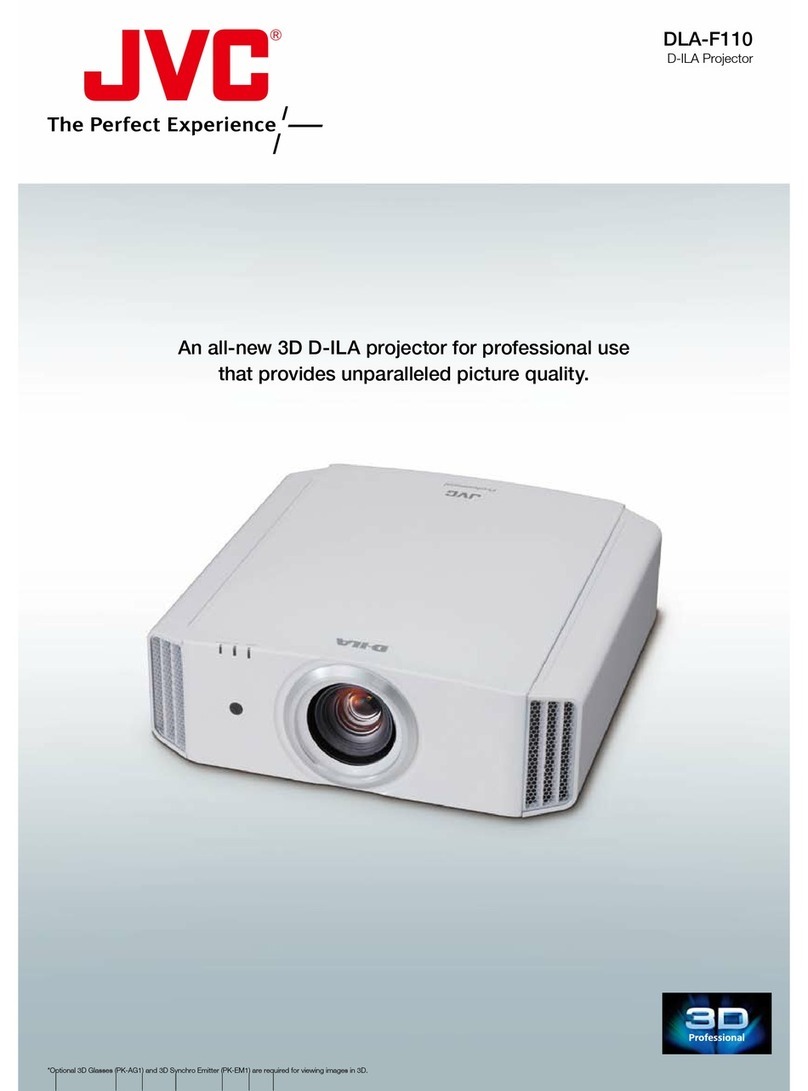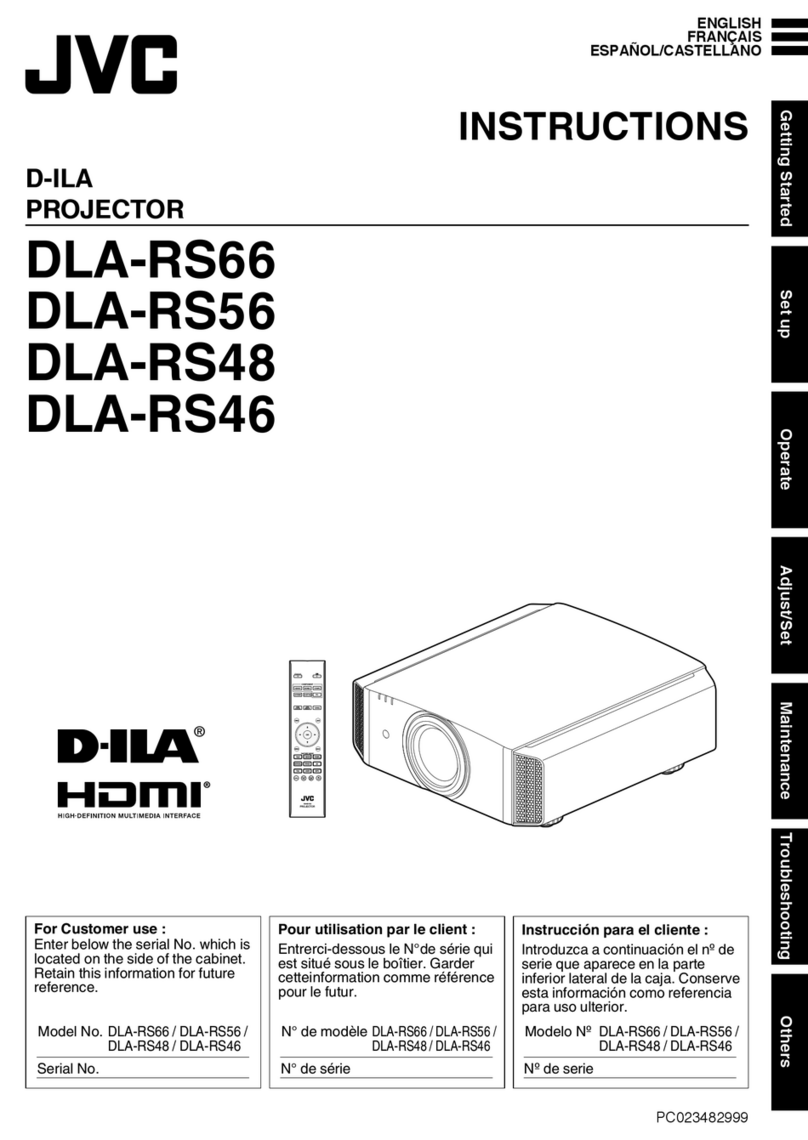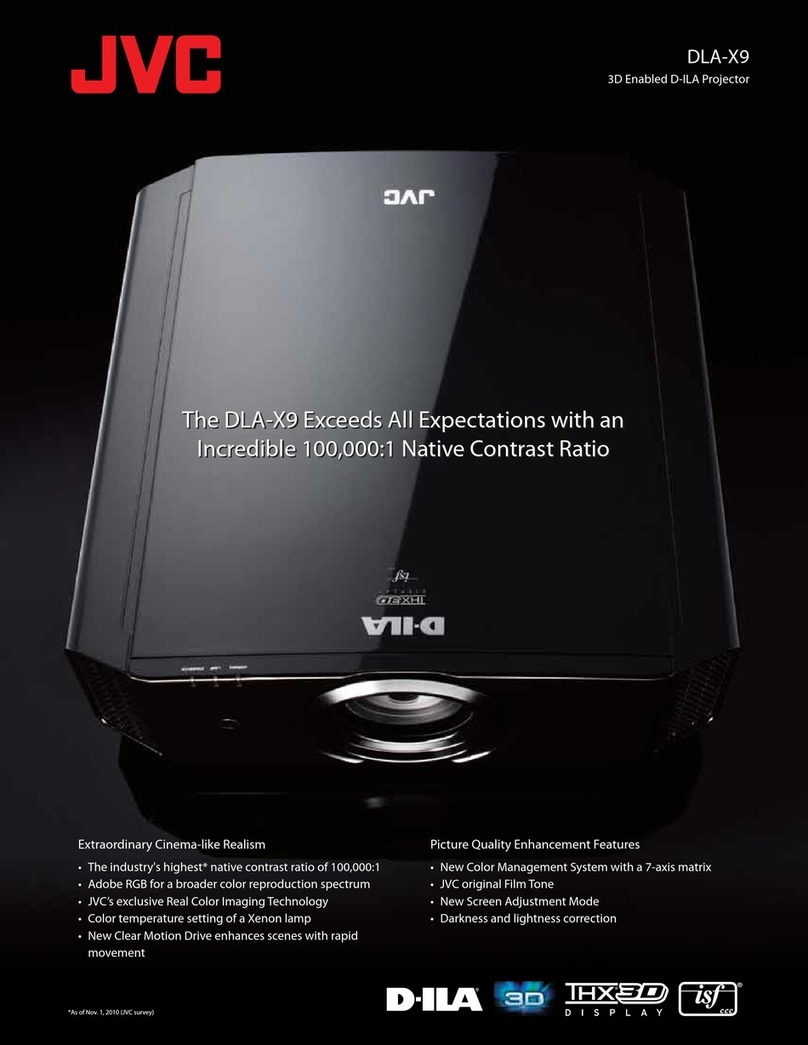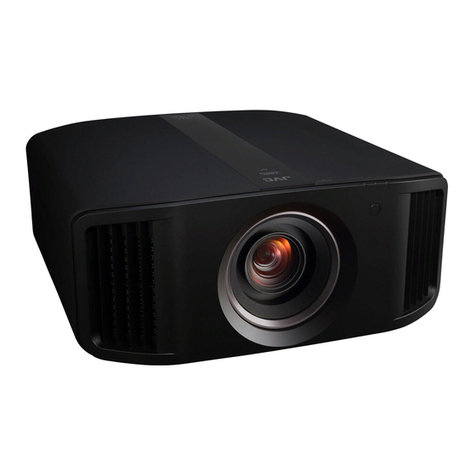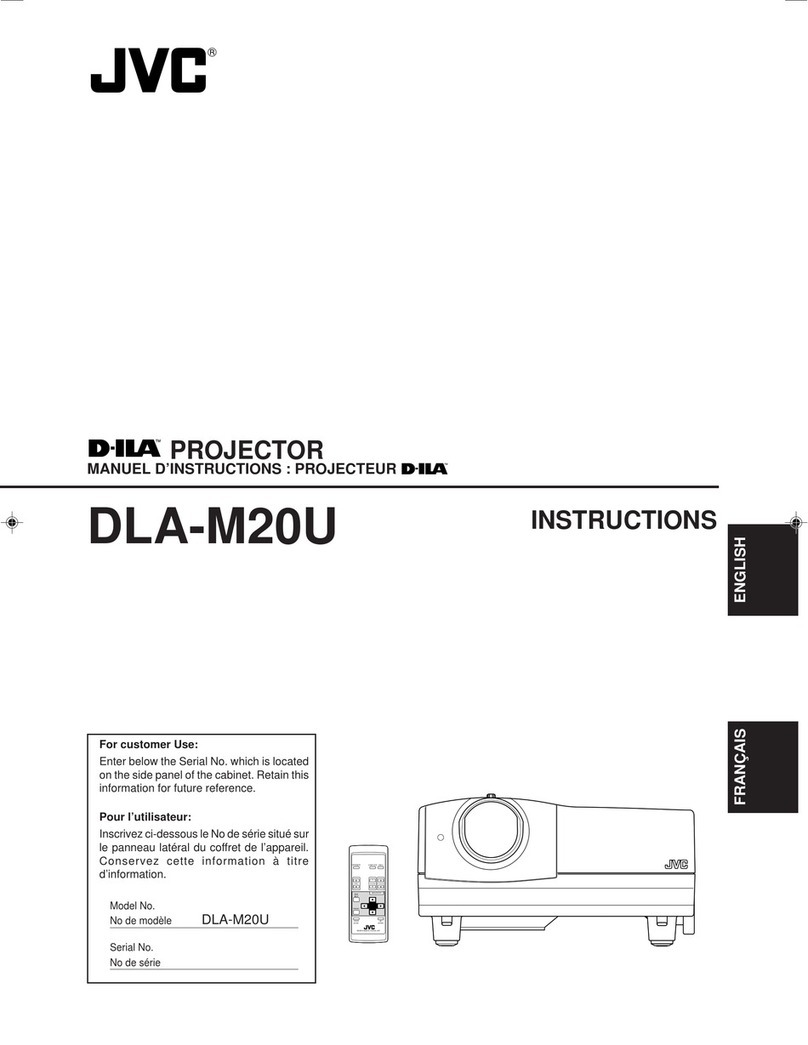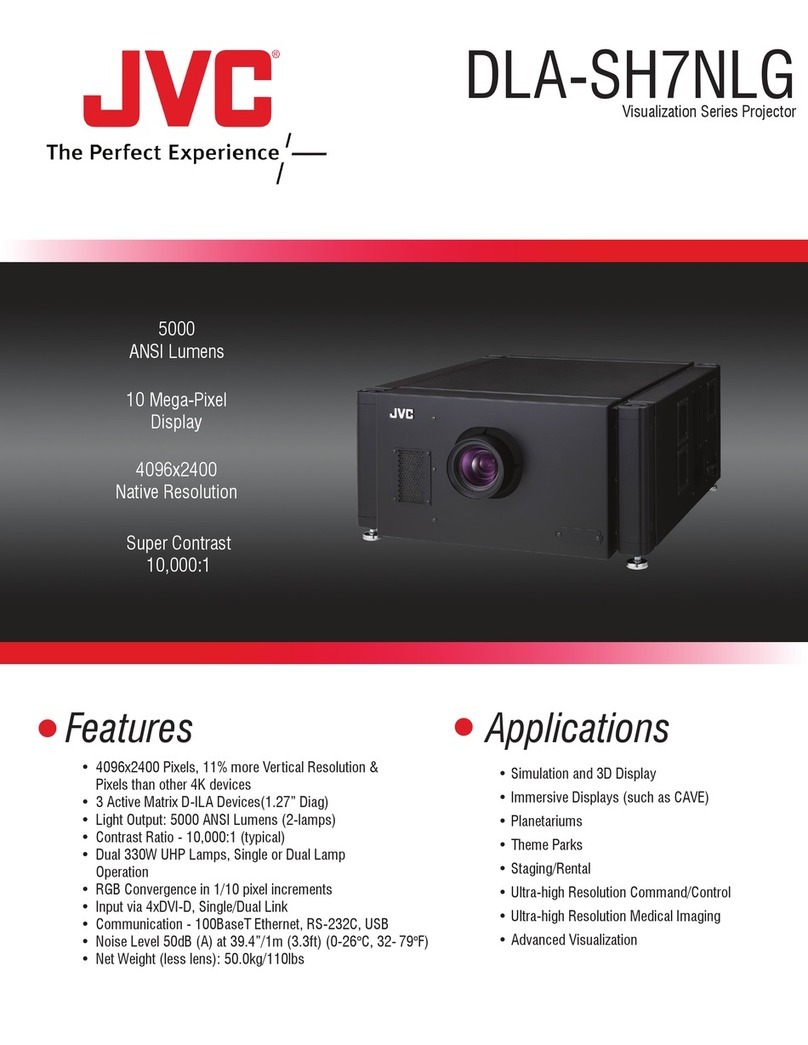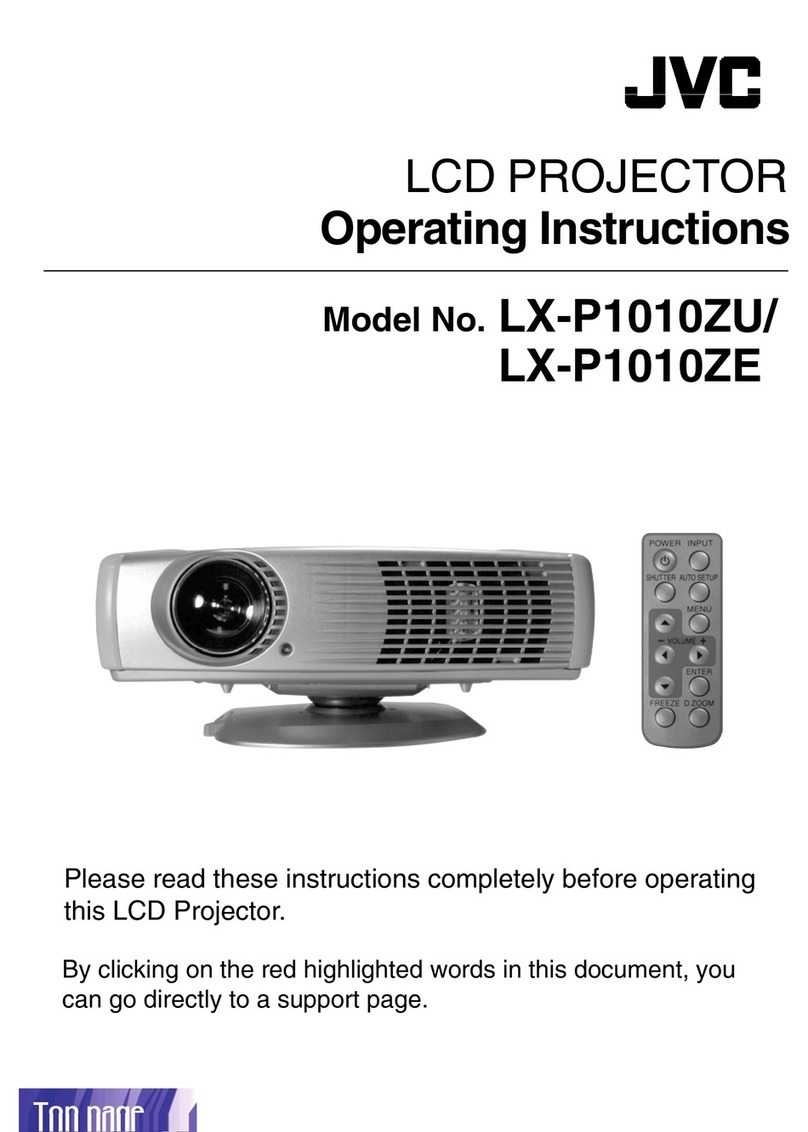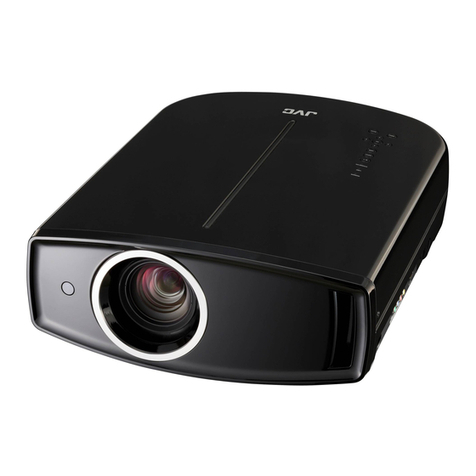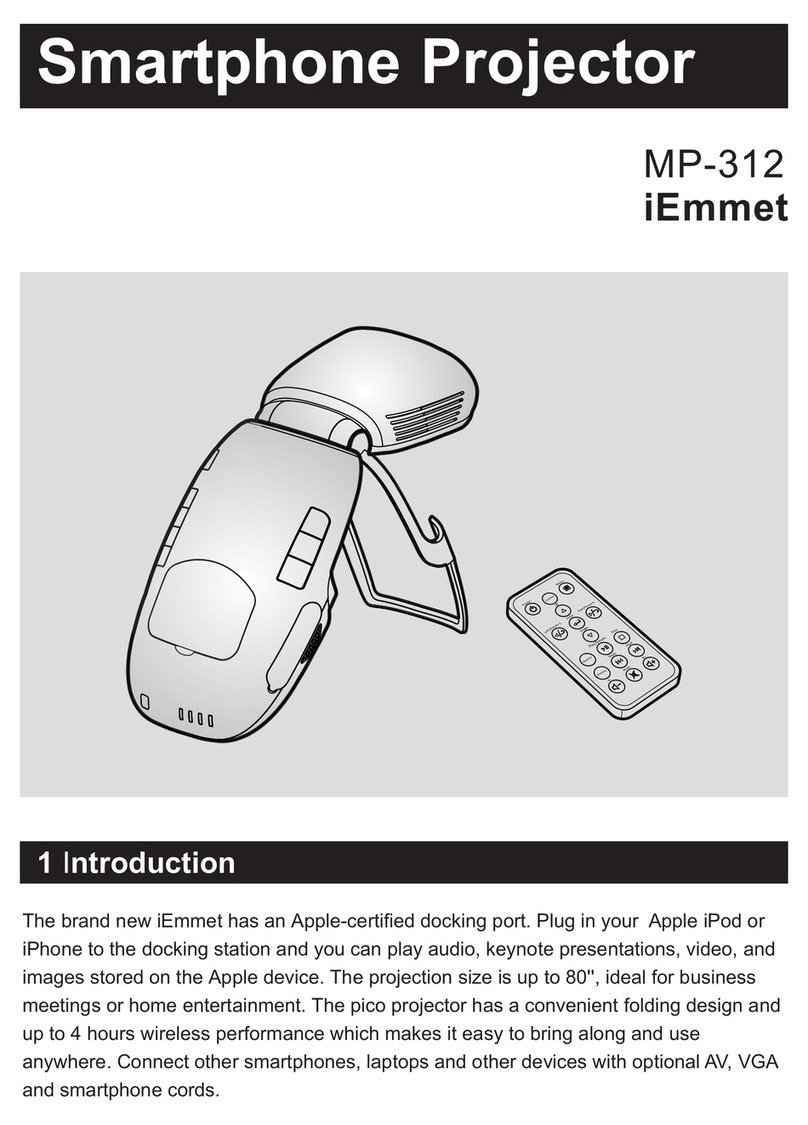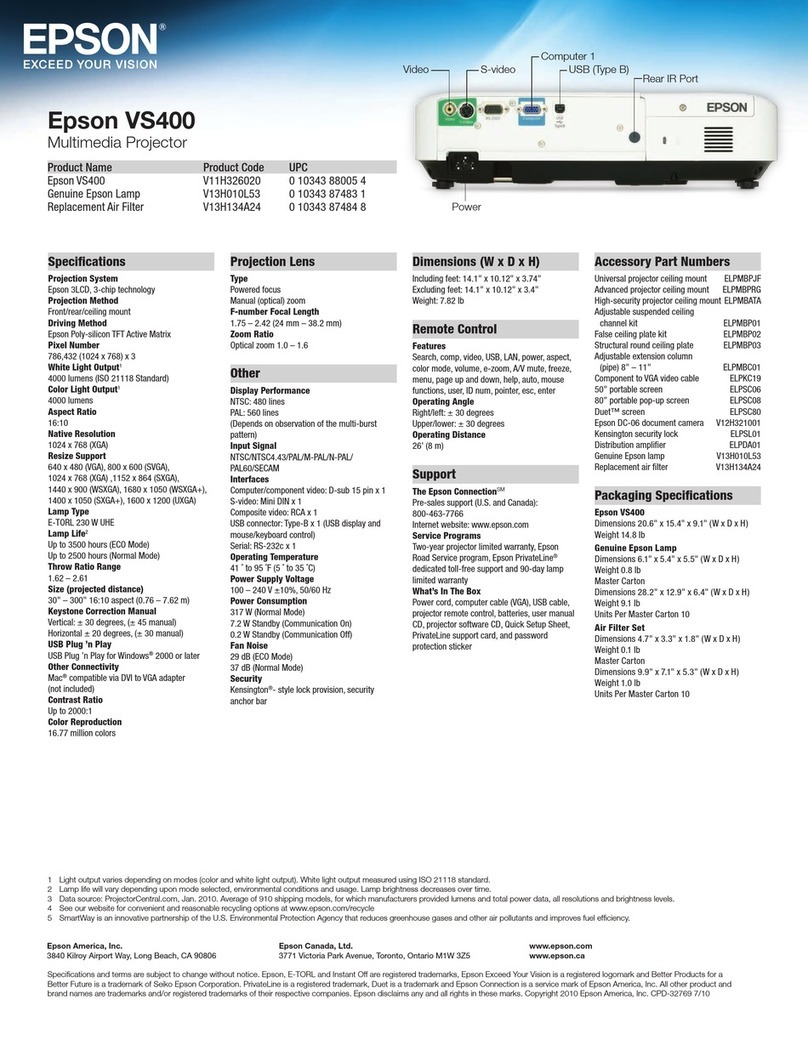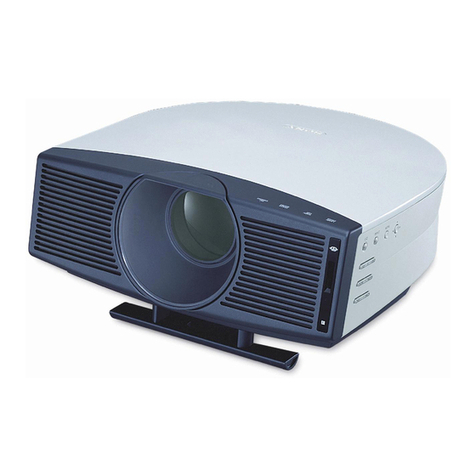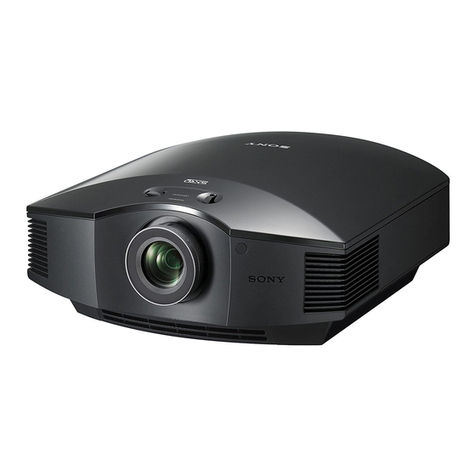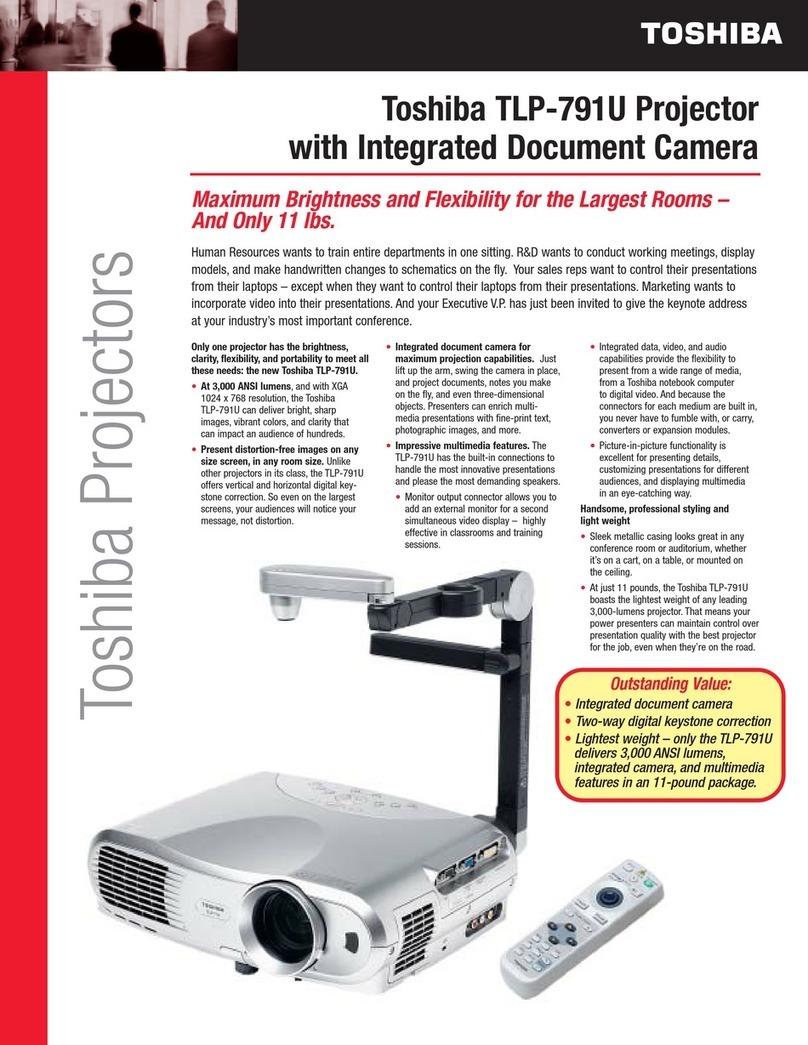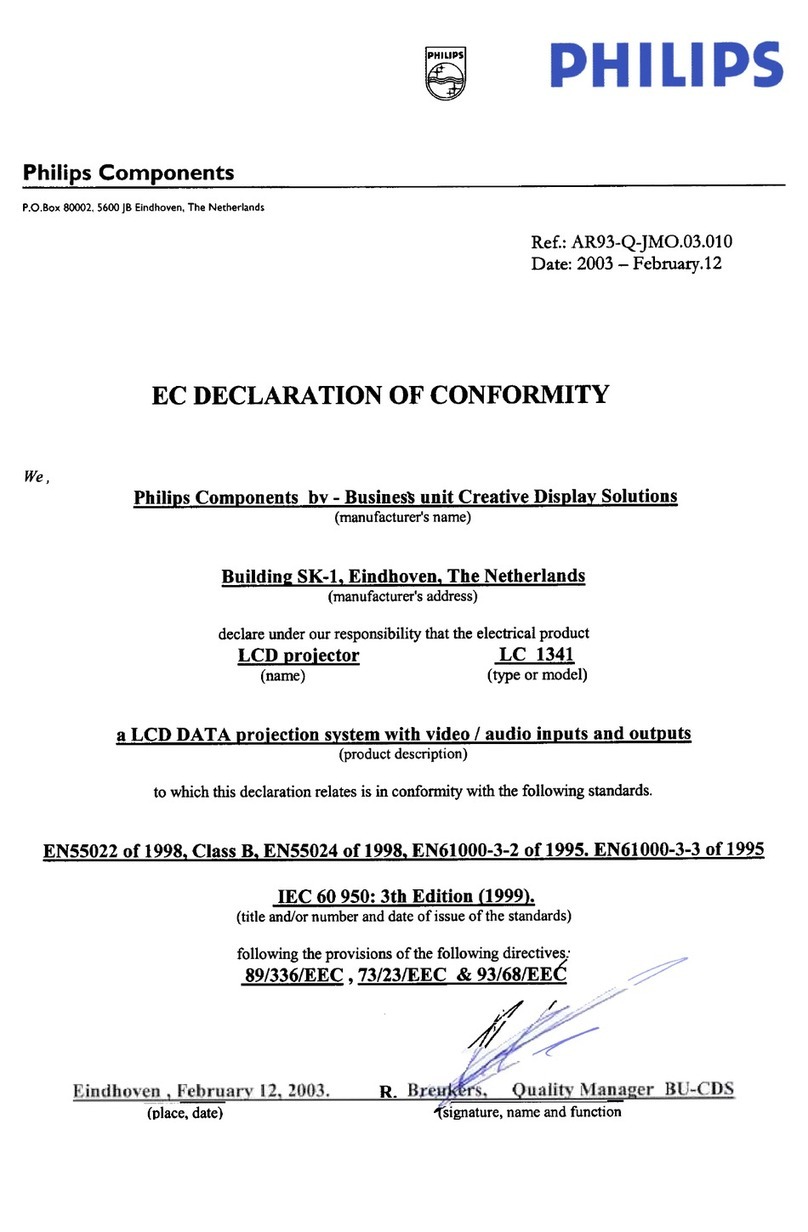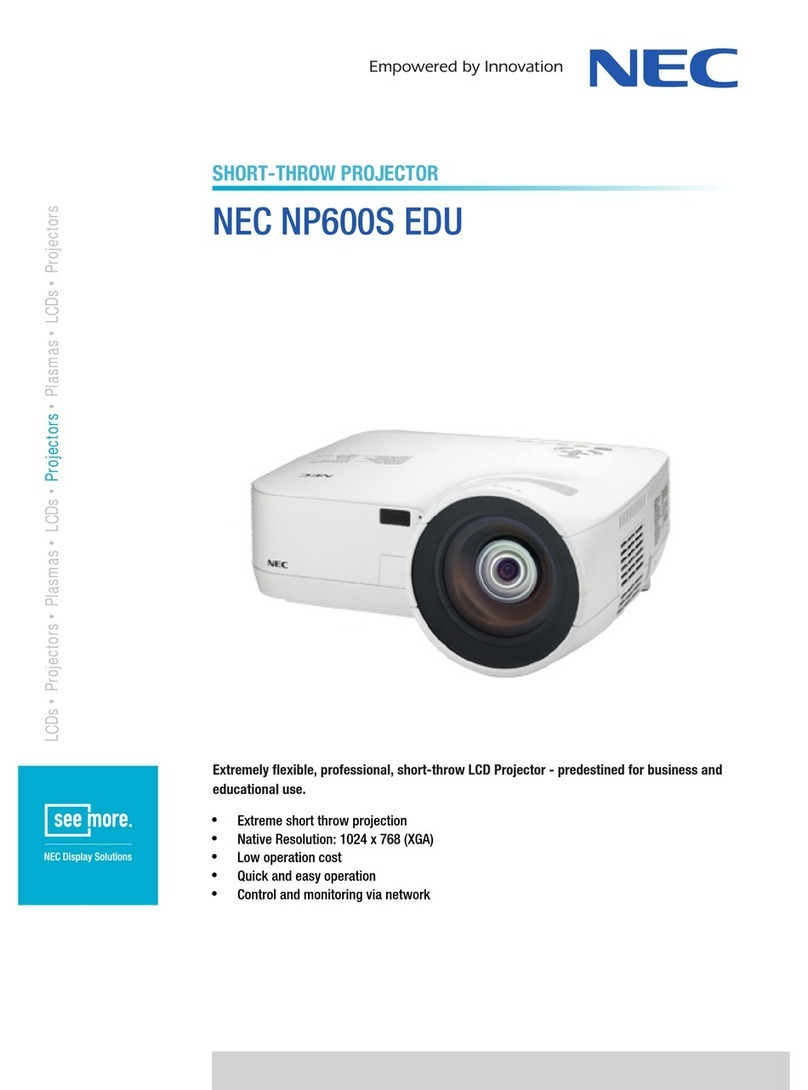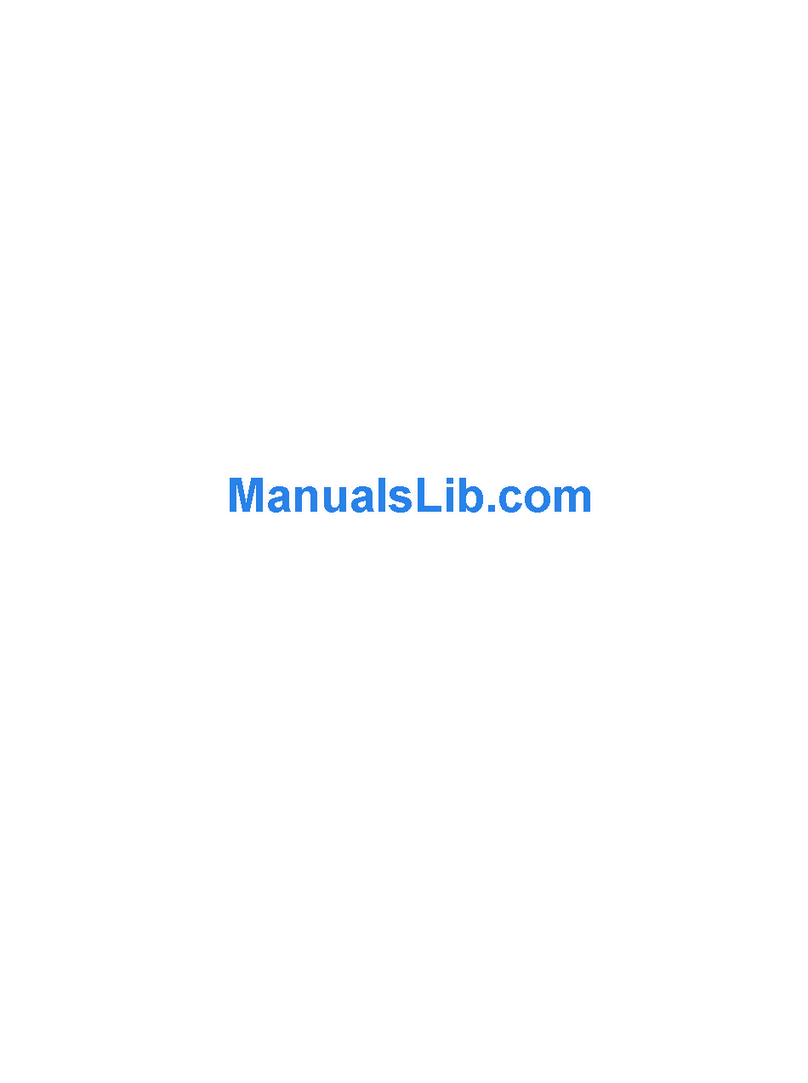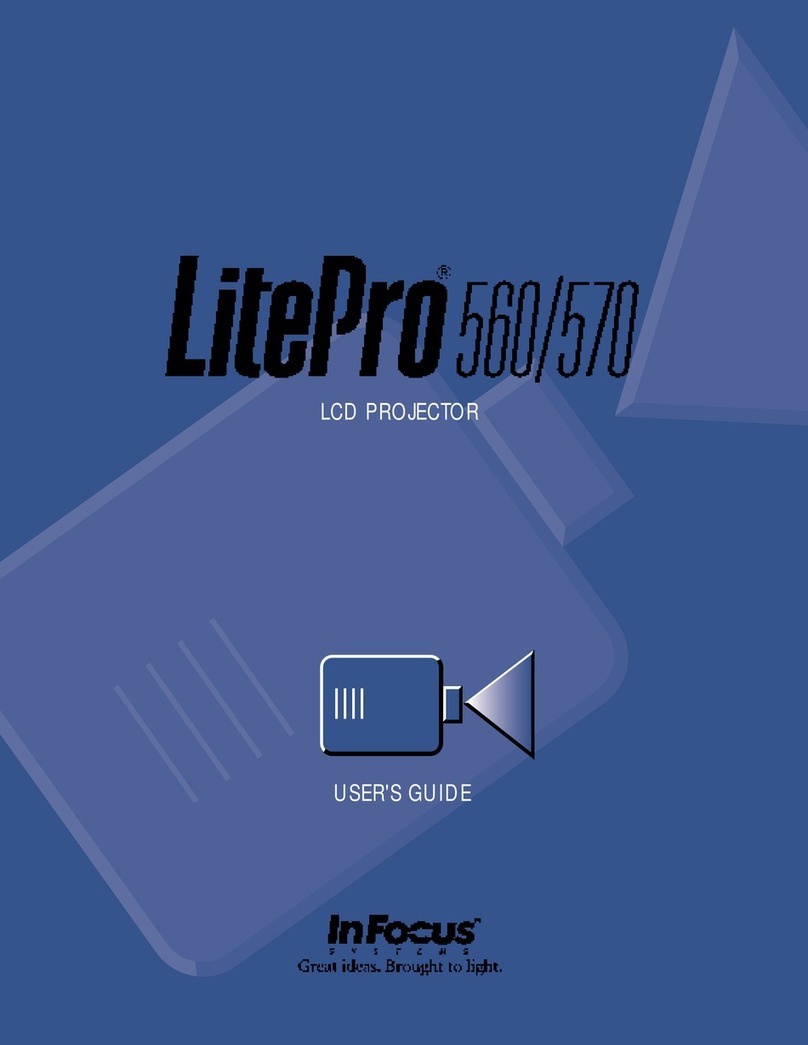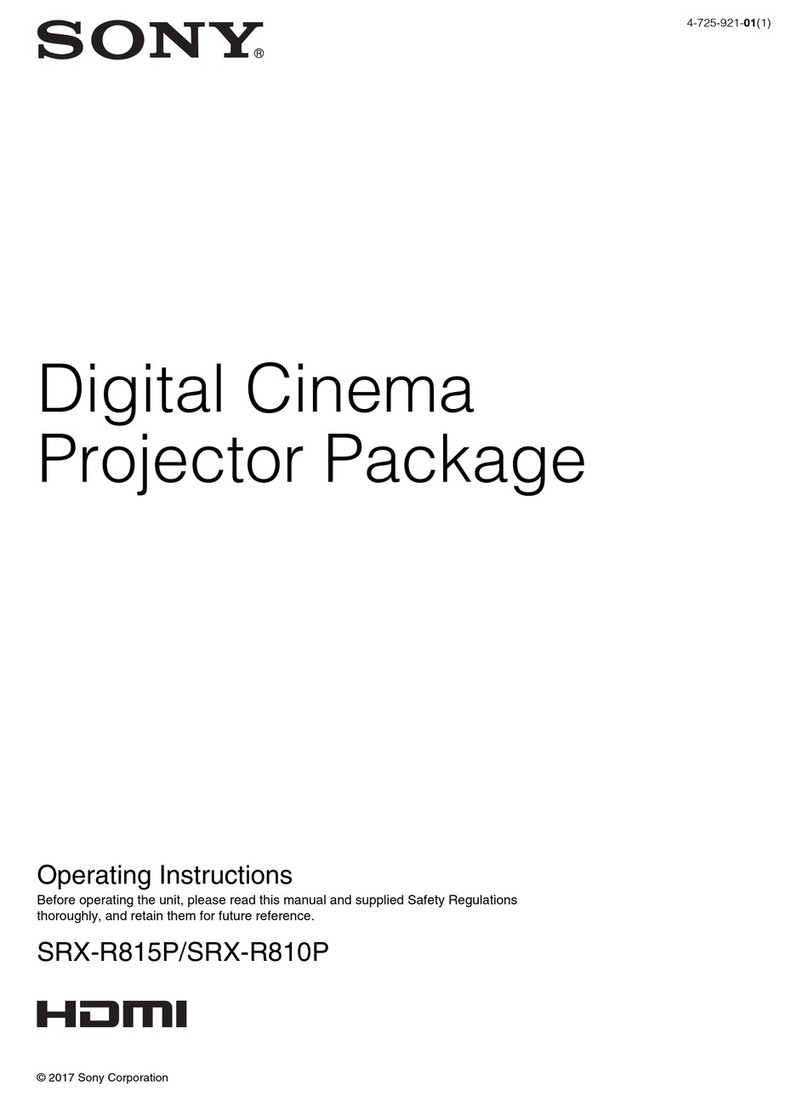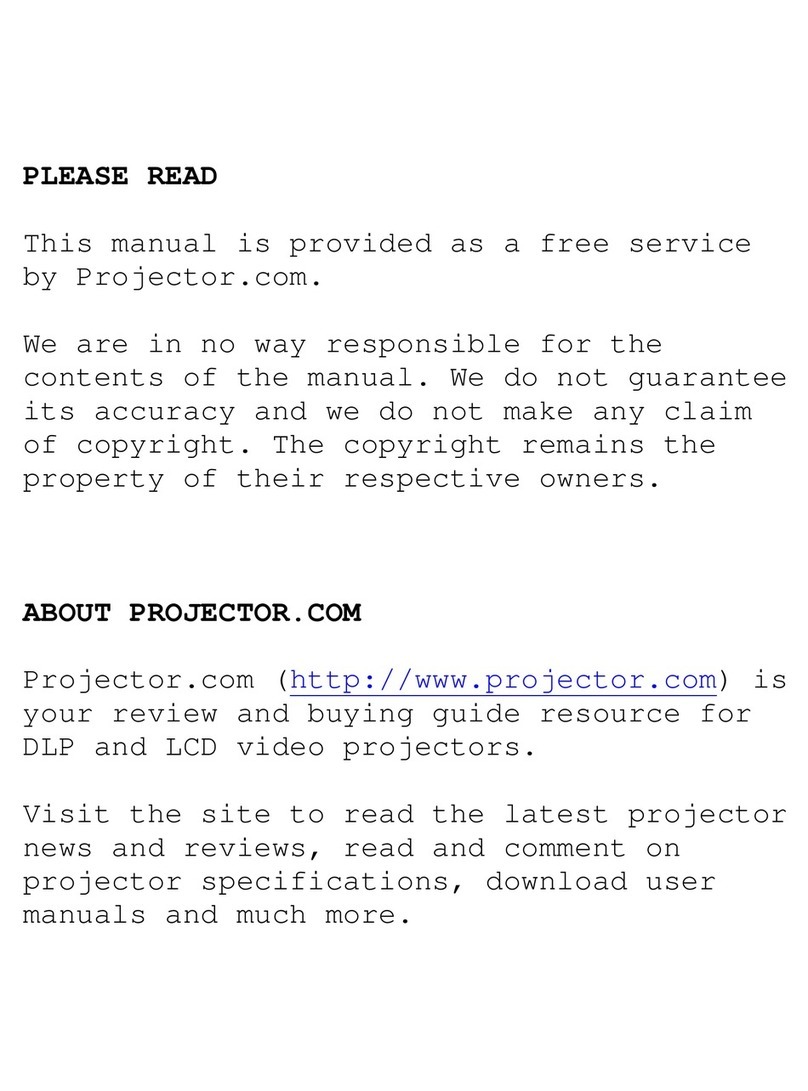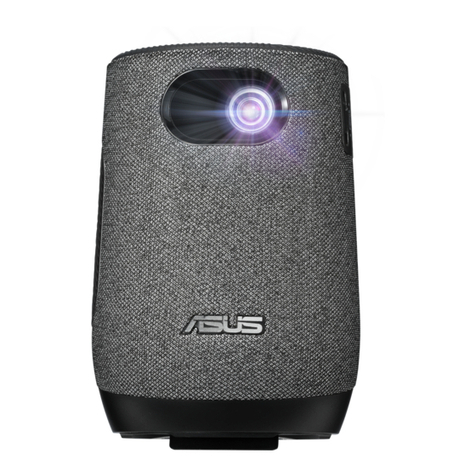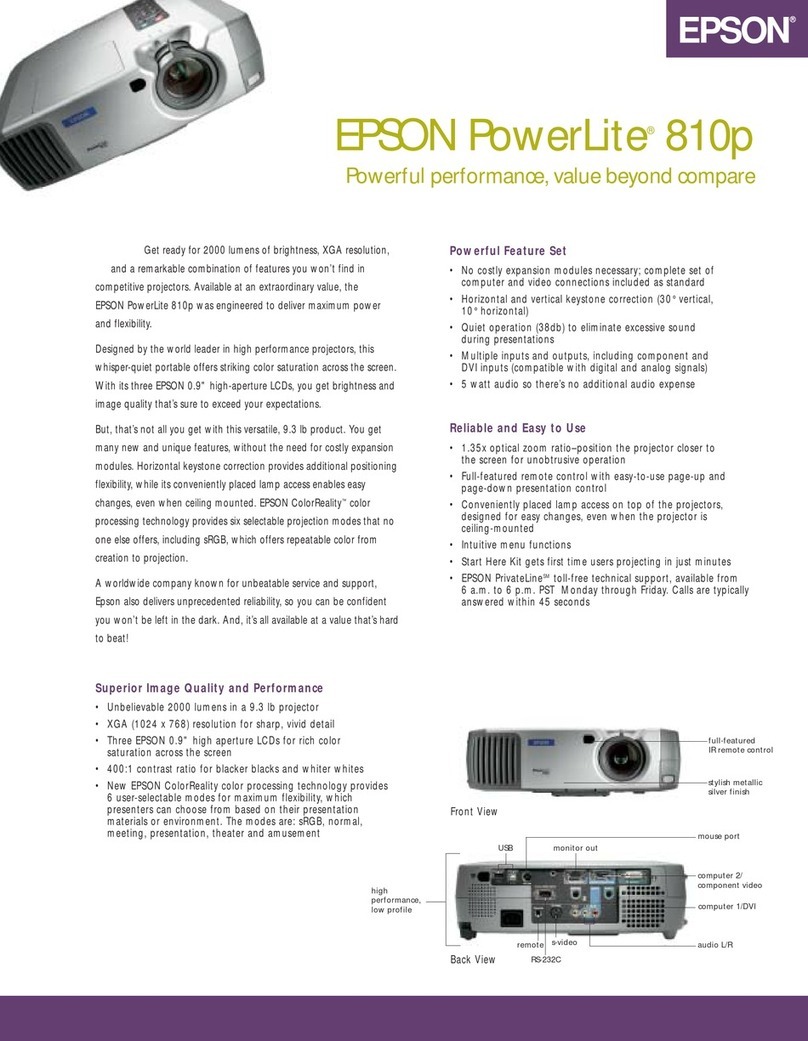for each input except Computer 1, which is al-
ways 4:3. Horizontal scan rates from 15kHz–82kHz
and vertical frequencies from 50Hz–75Hz are
supported.
Picture adjustments change according to
the input signal. Video inputs allow control of
Brightness (black level), Contrast, Color, Tint
and Sharpness. The Computer inputs allow
control of Brightness, Contrast, R-gain, G-gain
and B-gain. When the computer input receives
an NTSC or HDTV signal, the choices are the
same as for the Video inputs. The picture ad-
justments are available on the remote only. They
are not available from the projector’s top panel.
Light Output
This projector produced the highest light out-
put that I have measured. With 15 hours on the
lamp, I conservatively obtained 1700 lumens in
the 4:3 mode and 1275 lumens in the 16:9 mode.
Absolute maximum output in 4:3 mode was about
1850 lumens. Output measurements were re-
peated at 98 lamp hours. Color temperature re-
mained unchanged, but light output decreased
by about 12 percent. This is normal and char-
acteristic of Xenon lamps.
Using my Da-Lite High Power screen with a
gain of 2.8, I observed some interesting prop-
erties. Screen surface brightness was about 105
foot-Lamberts, but I didn’t perceive this as signif-
icantly brighter than my reference projector that
achieves about 50 foot-Lamberts. The ability to tol-
erate room light was much better, however. I could
turn on most lights in the room without significant-
ly affecting the typical bright scenes of most tel-
evision programs. Only on dark movie scenes was
the effect of room light really significant. Results
with lower gain screens will be different.
Bear in mind that the bulb life is 1000 hours and
the projector software prohibits operation be-
yond that point. The bulb price is over $1,000,
or a little over $1 per hour of use.
Black Level
A limitation of all fixed-panel projectors is the
inability to achieve a total absence of light. A
black signal still produces some residual amount
of “unwanted” light, in this case 3.9 lumens for
a full black 1.78:1 screen. As a result, the on-off
contrast ratio was 330:1. This is much better than
a typical LCD projector, but not as good as the
best DLP projectors. The G20 delivers reason-
ably good blacks, but don’t expect the jet blacks
of a CRT projector or you may be disappointed. On
the other hand, contrast on bright scenes was
excellent and much better than most CRTs.
I experimented with neutral density filters in
an effort to achieve a darker absolute black
level. I used a 0.4 neutral density Kodak Wratten
filter over the front of the lens. This reduced the
light output to 40-percent of its original value.
With 1275 lumens available in the 16:9 mode,
510 lumens is still available using the filter. Un-
less you have a projector with such high light
output, you couldn’t consider giving up this
much light. Although this improved the absolute
blacks, I preferred the higher brightness picture
on most scenes.
If you want to experiment with this technique,
there is an extremely simple way to do it. A
neutral density filter can either be placed over
the projector lens or over one’s eyes. It’s easy
and effective to use a pair of Ray-Ban sun-
glasses to see the effect that a neutral density
filter would have on a projector that doesn’t pro-
duce totally dark blacks. The Ray-Bans pass
about 20-25 percent of the light and have only
a small effect on color. If you have a pair, the
cost to experiment is zero and you can easily
take them on and off to see the effect on differ-
ent scenes. Don’t laugh. Try it; it works. [But
beware of someone snapping a picture of you
watching movies in a totally dark room while
wearing sunglasses!—Editor]
There is a gray frame that is visible surround-
ing the image. This is probably a remnant of
the mounting frame that is part of the D-ILA
panel. This characteristic is annoying and should
be masked better in future products. You can mask
the unused edges of the screen with curtains
or other non-reflective materials to minimize
this problem.
Color Temperature
And Calibration
The G20 does not have a service menu.
Calibration is only possible using special facto-
ry software. For this reason, it is important that the
factory calibration is accurate, which fortunate-
ly it was. This unit had near-perfect gray scale
tracking and color temperature.
Color temperature was 6500K (degrees Kelvin),
+/- 100K from 25-90 IRE. It was 6500K, +500K/
-300K from 5-100 IRE. Although the color tem-
perature was correct, the color coordinates were
just slightly off the D65 standard value. The total
color error was about 13 color difference units.
All of these values were measured using the Medium
color temperature. When set to High, color tem-
perature increased to about 11,100K. When set
to Low, the color temperature was about 4450K.
Results were similar on all inputs.
Flat field uniformity was average to good. Only
on a full black screen was color non-uniformity
noticeable. The left and right sides of a full black
screen were tinted just slightly green and ma-
genta. Gray and white fields were much better,
with only the slightest hint of any coloration.
Color Gamut And
Gamma Correction
The green and blue primaries are outside
both the HDTV and SMPTE color triangles. The
green primary is significantly different, which
produces more deeply saturated greens. I person-
ally find this characteristic desirable. The red
primary was slightly orange-red.
Gamma is the relationship between screen
brightness and video signal level. It should
have a value of 2.2. Special circuits must be
provided in fixed panel projectors to provide
gamma correction. CRT projectors have no
need for these circuits because their display
tubes provide a natural gamma characteristic
close to the correct properties. Gamma values
were somewhat low, which slightly reduced con-
trast in high brightness scenes. But overall, the
gamma performance was fine and showed
excellent shadow detail.
Fan Noise
The cooling fans in the JVC DLA-G20U pro-
jector produce quite a bit of noise, similar to a
noisy slide projector. This may be a problem
for some viewers. I measured 53 dBA at 1 meter
in front of the projector and 56 dBA at 1 meter
from the side of the projector containing the
fans. The spectrum of the sound was relatively
flat and smooth, with a slight rise in the 250Hz
to 400Hz region. The sound is basically a dif-
fuse wind sound with just a slight hint of any
tone or pitch.
Focus Enhancements
Quadscan Pro
The G20’s internal scan converter produced
a tolerable picture, but artifacts were frequently
seen on both moving and still images from
